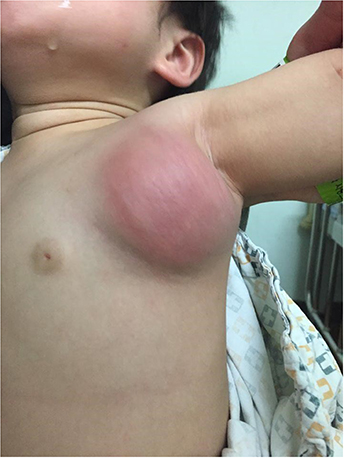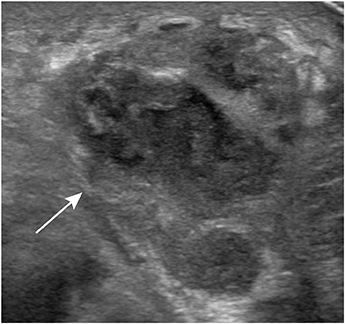Pediatr Infect Vaccine.
2018 Aug;25(2):107-112. 10.14776/piv.2018.25.e6.
Recurrent Familial Furunculosis Associated with Panton-Valentine Leukocidin-Positive Methicillin-Susceptible Staphylococcus aureus ST1
- Affiliations
-
- 1Department of Internal Medicine, Kosin University College of Medicine, Busan, the Republic of Korea.
- 2Department of Internal Medicine, Kosin University Gospel Hospital, Busan, the Republic of Korea. aiteite1@naver.com
- 3Department of Dental Hygiene, College of Health and Welfare, Silla University, Busan, the Republic of Korea.
- 4Department of Laboratory Medicine, Kosin University College of Medicine, Busan, the Republic of Korea.
- 5Department of Pediatrics, Kosin University College of Medicine, Busan, the Republic of Korea.
- KMID: 2418543
- DOI: http://doi.org/10.14776/piv.2018.25.e6
Abstract
- Staphylococcus aureus is now a major community-acquired pathogen worldwide, notably associated with skin and soft tissue infections. Staphylococci are present in the form of colonizers or environmental contaminants at home and increase the risk of recurrent infection. We are describing recurrent familial furunculosis caused by Panton-Valentine Leukocidin-positive methicillin susceptible S. aureus ST1 in Korea. An infant, his father and mother had furunculosis due to methicillin-sensitive S. aureus (MSSA) infection with identical susceptibility patterns. ST1 accounted for all 3 isolates and they were confirmed of having agr group I. Both sec and seh were detected in all isolates using polymerase chain reaction (PCR) assays, and all isolates contained Panton-Valentine leukocidin (PVL) genes. Risk factors for the household spread of S. aureus include skin conditions and close physical contact among household members. The relationship between S. aureus colonization of household contacts and the occurrence of S. aureus infection should be studied into more detail.
MeSH Terms
Figure
Reference
-
1. Chen AE, Cantey JB, Carroll KC, Ross T, Speser S, Siberry GK. Discordance between Staphylococcus aureus nasal colonization and skin infections in children. Pediatr Infect Dis J. 2009; 28:244–246.
Article2. Boucher HW, Corey GR. Epidemiology of methicillin-resistant Staphylococcus aureus . Clin Infect Dis. 2008; 46:Suppl 5. S344–S349.3. Johansson PJ, Gustafsson EB, Ringberg H. High prevalence of MRSA in household contacts. Scand J Infect Dis. 2007; 39:764–768.
Article4. Miller M, Cook HA, Furuya EY, Bhat M, Lee MH, Vavagiakis P, et al. Staphylococcus aureus in the community: colonization versus infection. PLoS One. 2009; 4:e6708.5. Miller LG, Perdreau-Remington F, Bayer AS, Diep B, Tan N, Bharadwa K, et al. Clinical and epidemiologic characteristics cannot distinguish community-associated methicillin-resistant Staphylococcus aureus infection from methicillin-susceptible S. aureus infection: a prospective investigation. Clin Infect Dis. 2007; 44:471–482.
Article6. Kearns AM, Ganner M, Holmes A. The ‘Oxford Staphylococcus’: a note of caution. J Antimicrob Chemother. 2006; 58:480–481.
Article7. Strauss R, Amsler K, Jacobs M, Bush K, Noel G. P1321 regional variation in Panton-Valentine leukocidin positivity smong S. aureus isolates in complicated skin and skin structure infections. Int J Antimicrob Agents. 2007; 29:S365–S366.8. Enright MC, Day NP, Davies CE, Peacock SJ, Spratt BG. Multilocus sequence typing for characterization of methicillin-resistant and methicillin-susceptible clones of Staphylococcus aureus . J Clin Microbiol. 2000; 38:1008–1015.
Article9. Jarraud S, Mougel C, Thioulouse J, Lina G, Meugnier H, Forey F, et al. Relationships between Staphylococcus aureus genetic background, virulence factors, agr groups (alleles), and human disease. Infect Immun. 2002; 70:631–641.
Article10. Lina G, Piémont Y, Godail-Gamot F, Bes M, Peter MO, Gauduchon V, et al. Involvement of Panton-Valentine leukocidin-producing Staphylococcus aureus in primary skin infections and pneumonia. Clin Infect Dis. 1999; 29:1128–1132.
Article11. Cook HA, Furuya EY, Larson E, Vasquez G, Lowy FD. Heterosexual transmission of community-associated methicillin-resistant Staphylococcus aureus . Clin Infect Dis. 2007; 44:410–413.
Article12. Yamamoto T, Takano T, Yabe S, Higuchi W, Iwao Y, Isobe H, et al. Super-sticky familial infections caused by Panton-Valentine leukocidin-positive ST22 community-acquired methicillin-resistant Staphylococcus aureus in Japan. J Infect Chemother. 2012; 18:187–198.
Article13. Genestier AL, Michallet MC, Prévost G, Bellot G, Chalabreysse L, Peyrol S, et al. Staphylococcus aureus Panton-Valentine leukocidin directly targets mitochondria and induces Bax-independent apoptosis of human neutrophils. J Clin Invest. 2005; 115:3117–3127.
Article14. Narita S, Kaneko J, Chiba J, Piémont Y, Jarraud S, Etienne J, et al. Phage conversion of Panton-Valentine leukocidin in Staphylococcus aureus: molecular analysis of a PVL-converting phage, phiSLT. Gene. 2001; 268:195–206.
Article15. Laifer G, Frei R, Adler H, Fluckiger U. Necrotising pneumonia complicating a nasal furuncle. Lancet. 2006; 367:1628.
Article16. Couvé-Deacon E, Tristan A, Pestourie N, Faure C, Doffoel-Hantz V, Garnier F, et al. Outbreak of Panton-Valentine leukocidin-associated methicillin-susceptible Staphylococcus aureus infection in a rugby team, France, 2010–2011. Emerg Infect Dis. 2016; 22:96–99.
Article17. Tinelli M, Monaco M, Vimercati M, Ceraminiello A, Pantosti A. Methicillin-susceptible Staphylococcus aureus in skin and soft tissue infections, Northern Italy. Emerg Infect Dis. 2009; 15:250–257.
Article18. Knox J, Uhlemann AC, Miller M, Hafer C, Vasquez G, Vavagiakis P, et al. Environmental contamination as a risk factor for intra-household Staphylococcus aureus transmission. PLoS One. 2012; 7:e49900.19. Uhlemann AC, Knox J, Miller M, Hafer C, Vasquez G, Ryan M, et al. The environment as an unrecognized reservoir for community-associated methicillin resistant Staphylococcus aureus USA300: a case-control study. PLoS One. 2011; 6:e22407.
- Full Text Links
- Actions
-
Cited
- CITED
-
- Close
- Share
- Similar articles
-
- Panton-Valentine Leukocidin Positive Methicillin-Susceptible Staphylococcus aureus: A Case Report of Two Pediatric Patients with Thrombotic Complications
- A Case of a Submandibular Abscess caused by Panton-Valentine leukocidin Positive USA 300 Community-associated Methicillin Resistant Staphylococcus aureus in a Foreign Resident of South Korea
- A Case of Perianal Abscess due to Panton-Valentine Leukocidin Positive Community-Associated Methicillin-Resistant Staphylococcus aureus : Report in Korea and Literature Review from the Far East
- Erratum: Panton-Valentine Leukocidin Positive Staphylococcus aureus Isolated from Blood in Korea
- A case of multiple furunculosis caused by methicillin-resistant staphylococcs aureus



